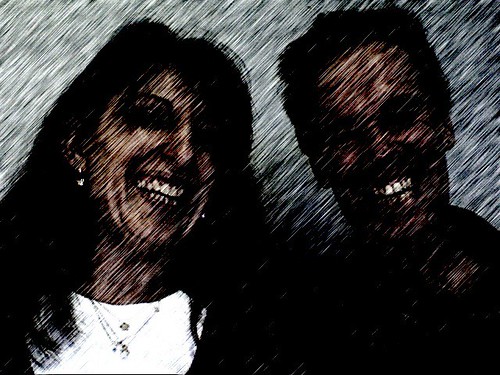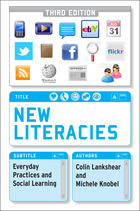Tuesday, March 17, 2020
Our recent paper on memes
At the end of the 90s we began asking ourselves what might count as 'new' literacies. What would it mean to think of literacy practices that could, in a significant sense, be regarded as 'new'? We took a fairly simple approach to this question and identified some examples of what we considered to be 'new' literacy practices--in the sense of: well, if anything can be thought of as a 'new' literacy practice, then X (or Y, or whatever) would be an example. Then we just had to find some Xs and Ys and try to decide what is was about them that made us think of them as being 'new'.
One of the first examples we hit on was what we called meme-ing. We thought of memes in the way David Bennahum had defined them on his Meme electronic newsletter : as contagious ideas that replicate like a virus, passed on from mind to mind, and that function the same way that genes and viruses do, propagating through communication networks and face to face. For us, meme-ing involved trying to come up with something that was catchy and had 'hooks' and to then try to spread it as far and as quickly as possible. Using electronic networks was the obvious option. At that time very few people talked about memes outside of those involved in the emerging scholarly field and theory of memetics, although the idea of internet memes was just starting to catch on at the time.
By around 2003-2004 mainstream media was running occasional stories about internet memes and by 2005 we had identified a pool of English language internet memes we considered to be 'successful'. We analyzed these memes and published a small number of articles and book chapters based on our provisional exploratory study. These included Online memes, affinities and cultural production .
Shortly afterwards macro meme generators were invented, LOLCats exploded, and we pretty much lost interest in memes because they were no longer the savvy and quirky remixes we'd come to enjoy. We kept a casual eye out for meme trends, but it was only around 2017 that we started thinking about memes again. This was partly because Michele was getting interview requests from diverse US media sources, and we noticed a spike in readings of our memes work on social media like Researchgate and Academia.edu.
We realised that significant trends in memes and participation in memes over the previous decade made it a good idea to rekindle our earlier interest. At the end of 2019 we published our initial foray back into thinking about memes and trying to identify what we think are significant trends and issues associated with memes. We called this article Memes, macros, meaning and menace and it can be found here
Call for papers for Special Issue of Journal
The full call for papers can be found here
Meanwhile we have excerpted the following information from the call for papers for your convenience:
- Booktubers: Creation of promotion and book review channels, formation of reader networks, booktuber contests, etc.
- Fanfiction and popular literature: Reading, commenting and creating fanfic and other narratives on specialized digital platforms: fanfiction.net, Wattpad, etc.
- Groups of musical fans: Participation in fans group of a singer or musical group, with group management activity, content creation (for example, in the form of fanvids or vids, in which songs, music and images overlap, or translation practices, divulgation etc.
- Storytelling: Creation of narrative or poetic audiovisual works (stories, comic, photonovels, video poetry, drawn poetry, etc.), audiobooks, etc.
- Memes, phrases, postcards: Creation and propagation of short literary or paraliterary texts, with authentic or apocryphal phrases, thoughts or quotes, that young people create, take and reuse and share online through several channels (mobile, web, etc.) .
- Literary apps: Applications with digital stories that are read on touch screens and that develop multimodal narratives in which reader participation is key for the development of the story.
- Others








